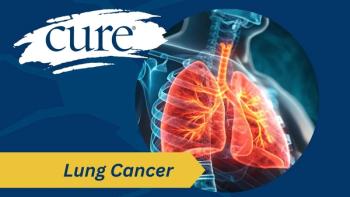
Caregivers of Patients with Head and Neck Cancer Have 'Negative Consequences' on Health
Caregiver burden was prevalent among caregivers of patients with head and neck cancer, due to lack of patient employment and poor health-related quality of life.
Caregivers faced negative health outcomes when caring for patients with head and neck cancer, particularly patients who were not working and had lower health-related quality of life (HRQOL), according to the findings of a new study, which found that associations between patient- and caregiver-specific factors led to increased caregiver burden (CGB).
In a study published on June 15 by JAMA Network, significant factors included patient employment and health-related quality of life (HRQOL), and caregiver gender and age differences with perceived social support.
Patient Employment and Health-Related Quality of Life (HRQOL) with Caregiver Burden
Because of the nature of HNC, patients are more likely to have less overall work hours due to increased time away from the workplace. Associations between nonworking patients — individuals who were unemployed, disabled or retired — and health problems for caregivers are relevant to this type of cancer. The authors from the study determined that patient employment was associated with “worsening health problems reported for caregivers of nonworking patients.”
Specifically, the authors found that caregivers of nonworking patients with HNC tend to have higher scores based on their Caregiver Reaction Assessment (CRA). The five subscales of the assessment were disrupted schedule, financial problems, lack of family support, health problems and self-esteem. Higher scores on the first four subscales of the CRA indicate more caregiver burden. However, a higher score on self-esteem meant positive reactions to caregiving.
The authors stated that “baseline patient characteristics, including poor HRQOL and unemployment, may represent patient-level risk factors associated with increased CGB and the associated negative consequences on caregiver health, psychosocial burden, and perceived social support.”
Patient HRQOL was assessed based on the University of Washington’s Quality of Life (UW-QOL) scale. The score range was from 0 to 100; higher scores indicated better quality of life. This study found that caregivers of patients with HNC who have UW-QOL scores equal or less than 62 at diagnosis could be at risk for increased caregiver health problems.
“The results (of the study) demonstrate that patient employment and HRQOL were associated with worsening health problems reported for caregivers of nonworking patients and patients with lower social and emotional HRQOL at baseline,” said the authors.
Caregiver Gender and Age Related to Caregiver Burden
This study from JAMA Network also emphasized how gender and age played a large role in potential caregiver burden. In particular, the findings suggest that women and younger-aged caregivers were associated with less perceived caregiver social support from the patient’s diagnosis to six months.
For gender, there was a correlation between women and the nature of traditional gender roles, whereby women had more intimate care responsibilities, along with more emotional and physical intensive repsonsibilities, compared to men. Women caregivers experienced more negative effects on their employment with all of the overwhelming responsibilities they carried, according to the study. In that sense, women caregivers reported that they do not receive nearly as much informal and formal support compared with men. These findings conclude that the stresses mentioned demonstrate higher CGB and stress levels in women caregivers.
Mindful of the added stress women cargivers feel, the authors also found that “women caregivers may exhibit higher interpersonal sensitivity, which can increase isolation and feelings of social inadequacy when there is a lack of emotional mutuality or reciprocity.”
Age also played a large role in CGB, especially for younger caregivers, who reported more burden and anxiety. The study noted that younger caregivers are caught in the middle between their own employment, the needs of their immediate families and caring for patients with HNC. Undoubtedly, caregivers of patients with HNC inevitably endure physical and mental health consequences, the authors found.
Nevertheless, there has been a recent change regarding CGB for the better. “Health systems in the US consistently overlook care- givers, despite implicit expectations to balance their personal needs with the complex health care needs of loved ones,” the authors stated. “Although CGB has long been recognized, only recently has caregiver health and support been a topic of conversation as a national priority.”
The authors concluded that improvement of caregiver support depends on legislation, such as the RAISE (Recognize, Assist, Include, Support and Engage) and Family Caregivers Act. State and local development of caregiver programs are guided by legislation to improve care coordination, financial support and education.
For more news on cancer updates, research and education, don’t forget to




